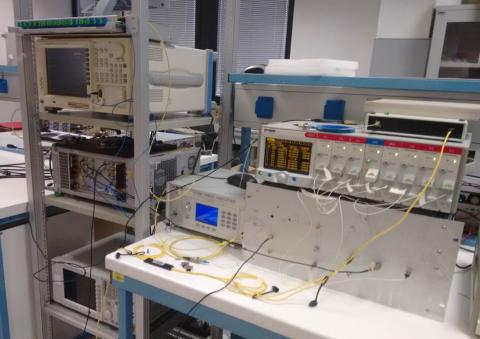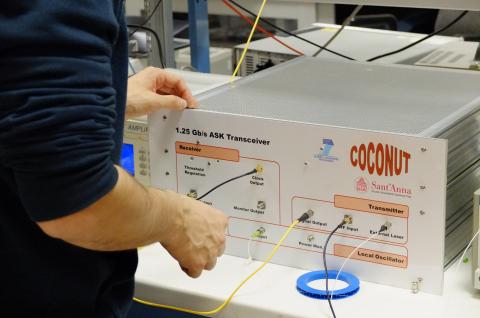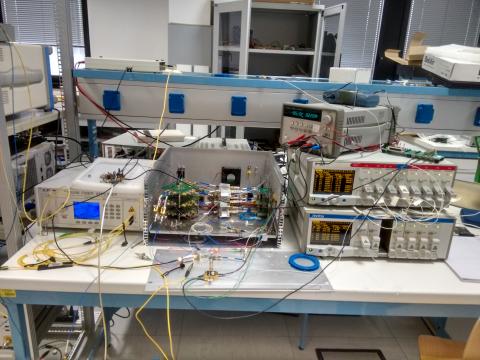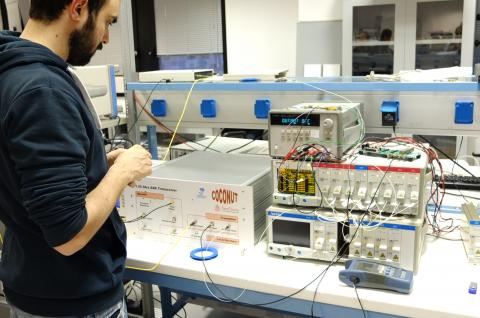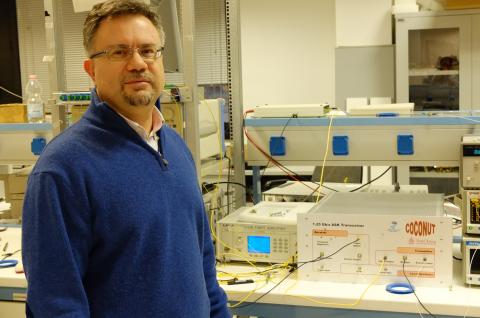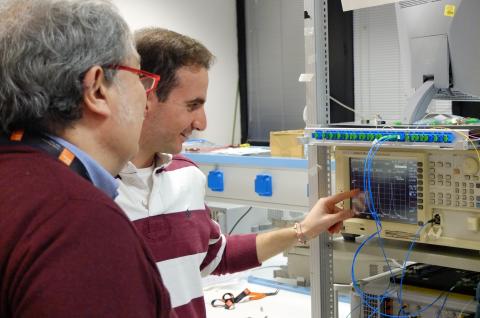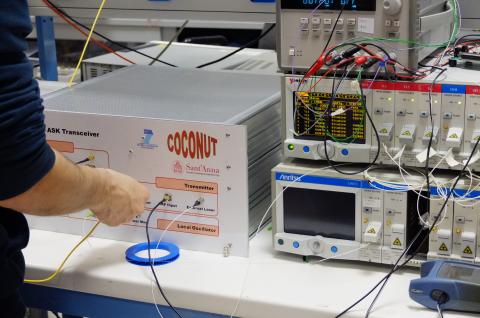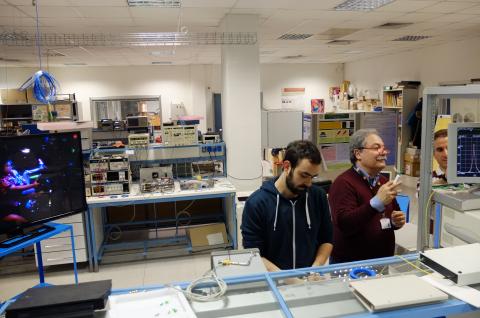Internet, the arrival of the ultra-wide-band: many optical channels, in existing fibres, will carry up to 1Gbit per second for each user
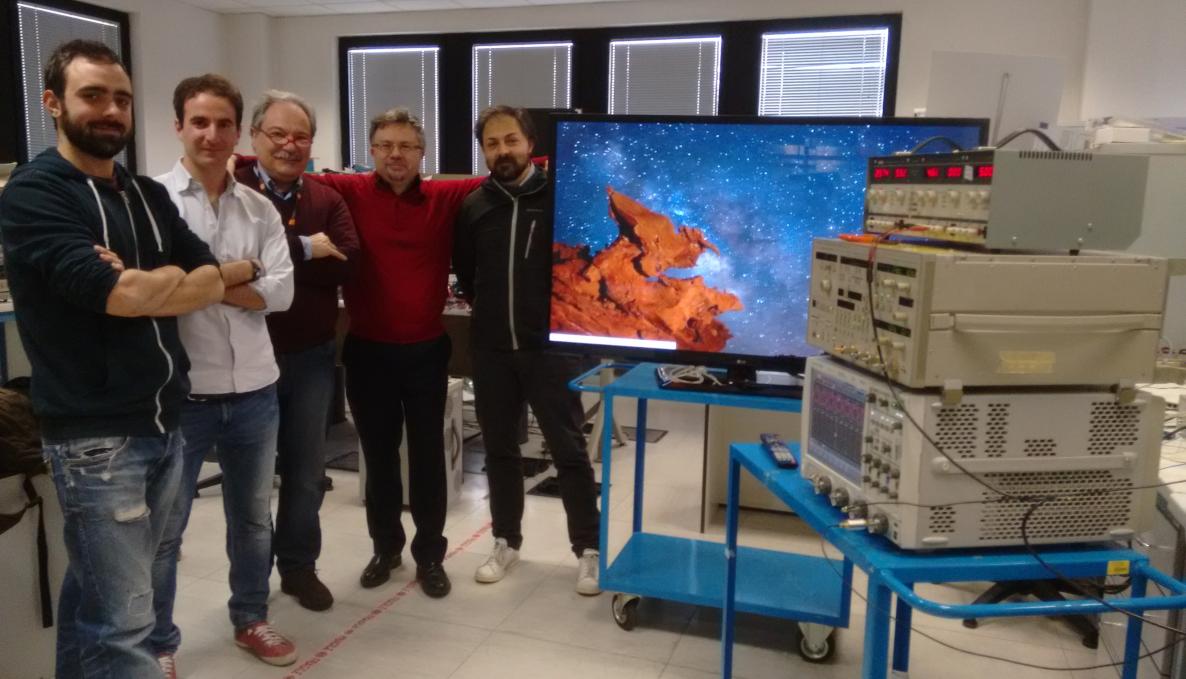
For home Internet access, we will soon have ultra-wide-band and multi-channel systems, which will make it possible to download video with an as yet unseen speed and resolution, affordable costs and without any need to modify current network infrastructures. The European research project COCONUT (“COst-effective COhereNt Ultra-dense-WDM-PON for lambda To-the user access”), financed with a budget of 4 million Euros and coordinated by the Italian scientists of the Sant’Anna School of Advanced Studies, has developed a new technology for the so-called “Fibre to the home” (“FTTH”). The “WDM” systems, which have various channels with different wavelengths, represent the new generation of Internet access networks. These systems are still based upon the optical fibre, but with a higher performance in comparison to the best performances delivered by current network managers. The ultra-dense “WDM” systems, developed within the European project COCONUT, guarantee a further strengthening of access speed and number of users. Each user – for a total of more than 300 users for each “WDM-PON, “Passive Optical Network” – can count upon a connection speed of 1Gbit/s.
After three years of research and laboratory testing, the effectiveness of the new system will be confirmed in a public demonstration on Friday the 5th of February at the Institute of Communications, Information and Perception Technologies (TeCIP) of the Sant’Anna School of Advanced Studies. During the scientific meeting, which will close the COCONUT project, a section of the commercial fibre-optic network in Pisa is due to be used.
The experiment demonstrates how the new transmission systems significantly strengthen the use of current fibre network infrastructures, with excellent results in terms of connection speed. It is, for example, possible to download high-resolution videos in a few seconds without “overcrowding” the current domestic wireless networks. The same technology may be used to connect mobile network antennae to the Internet with an ever growing speed. This perspective is also interesting for the next 5G networks.
The open demonstration, to be given on Friday the 5th of February, presents the solutions that have been developed by the researchers involved in the COCONUT projects, in order to bring each user a performance of 1 Gbit/s. The experiment will consist in the data transmission within a metropolitan fibre ring which has been made available by the company Agestel.
The COCONUT “identity card”. The project has been financed by the European Commission within the STREP category (“Specific Targeted Research Projects”). It started in November 2012 and the meeting on friday the 5th of February represents an important point of arrival. Ernesto Ciaramella, telecommunications professor at the Sant’Anna School of Advanced Studies, has coordinated the project. Universitat Politecnica de Catalunya (Spain) and Athens Information Technology Center (Greece) are the partner universities of the project. Other partners are British Telecom (United Kingdom), Ericsson AB (Sweden) and Alcatel-Lucent 35Lab (France), providers of equipments and devices, and Promax Electronica (Spain), Optronics Technologies (Greece). The European Commission contributed to the total budget of 4.1 million Euros, with a financing of 2.8 millions.
The Challenge. The results that will be shown tomorrow have led to the development of a ‘frontline” technology”. The main objective was to test the feasibility of a new Internet access network in optical fibres, called a “Passive Optical Network” (“PON”), which is a kind of broadband access network known as “Fibre to the home”. In the best performing version – explains Ernesto Ciaramella – the ‘PON’ networks use wavelength ‘multiplexing’, that is various channels with different wavelengths (“WDM”). Our intention was to significantly increase the number of channels, that is the number of wavelengths, and extend, compatibly with current infrastructure, the network dimension and the number of users able to connect at an affordable cost, thus leading the way towards the solutions often mentioned as “Gigabit-to-everyone”.
“Coherent reception – adds Ernesto Ciaramella – was considered the more promising technical solution for the new access networks, thanks to an excellent selectivity of wavelengths and better sensitivity. The first characteristic allows the ultra-dense WDM, the second makes it possible to increase considerably the reachable distance and the number of users. In the current implementation for long-distance networks, systems based upon coherent reception are very pricey and are unadvisable for access networks. For this reason our project has developed a very simplified coherent revelation, which maintains high performance but is compatible with consumer electronics standard prices and thus is appropriate for use in the domestic access network.
Industrial applications. The technology developed within COCONUT is linked to the development of broadband optical access networks. At the moment, the access infrastructure providers and the network operators, gathered in the organisation “Full Service Access Network” have already progressed in the formalisation of the first international standards using the “WDM” technology. A specific speech was given during a recent FSAN meeting regarding the project coordinated by the Sant’Anna School of Advanced Studies. On this occasion, it was stressed how the project develops one of the most interesting strand for the next generation of systems in order to increase the number of users and speed-up access to the network, leading it up to 1 Gbit/s for each user. On top of the benefits for users, there will also be advantages for the economy: the literature agrees in recognising how facility and speed of access can contribute to the growth of the gross national product.

